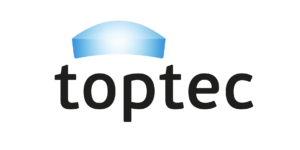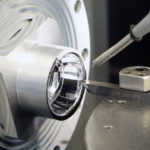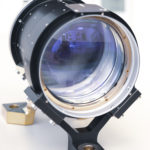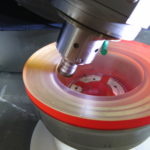Description
The TOPTEC Research Centre for Special optics and Optoelectronic Systems continues an almost 50-year-long tradition of research and development of special optics in the optical department of the Institute of Plasma Physics of the CAS. The TOPTEC Research Centre is engaged in the R & D of unique and application-specific systems (using the application of aspheric optics), development of ultra-precise mechanical components for optical systems, and development of thin films and measurement methods, all for scientific and industrial purposes.
The TOPTEC Centre has at its disposal new laboratories equipped with state-of-the-art technologies for research, development, machining, and measurement of special and ultra-precision optics and fine mechanics. It is staffed by a research team of 50 highly qualified and experienced specialists.
Competences and capabilities
For several decades, unique optical components for various applications (including astronomy) have been developed and manufactured at the Turnov department of the Academy of Sciences, and its researchers have participated in space projects since the 1980s (Interkosmos).
The combination of many years of research experience and state-of-the-art technologies as well as equipment supporting our capabilities in opto-mechanical design, simulation, construction, manufacturing, and measurement of special optics, enables the TOPTEC Centre to provide comprehensive R & D solutions in the field of optics.
In addition, the TOPTEC Centre researchers carry out dozens of contractual research projects every year, both for commercial entities and scientific institutes from various fields of expertise (aerospace, automotive, astronomy, biomedicine, engineering etc.).
Major Space Projects & References
Optical elements of FLORIS telescope for FLEX (FLuorescence EXplorer) mission (for Leonardo S.p.A.) – complex optical analysis of the system, assembly of individual optical and mechanical elements and their further integration into a fully functional system. The analysis and tests include characterization of optical surface scattering functions, bonding of opto-mechanical interfaces to minimize vibration shocks on optics, vibration and thermal tests and final full optical characterization of the system. The aim of the mission is to map vegetation fluorescence to quantify photosynthetic activity which will improve the understanding of carbon movement between plants and the atmosphere.
ARIEL (Atmospheric Remote-sensing Infrared Exoplanet Large-survey) (for ESA) – TOPTEC involvement in the project includes the design, development and realization of common optics setup, including its holders and adjustment capabilities.The mission will measure the chemical composition and thermal structures of exoplanets, linking them to the environment of the host star.
Optical Parts of the Coronagraph METIS on the Solar Orbiter Mission (for ESA) – the production of two main lightweight mirrors. The biggest challenge of the project lays in the necessity to meet the requirements on the optical quality of the mirrors – surface form (120 nm PV) and microroughness (0.3 nm) – while keeping their combined total weight below one kilogram.
Optics of the Coronagraph ASPIICS on the Proba-3 Mission (for ESA) – the overall optical design and tolerancing of the entire optical system (primary objective imaging the solar corona on the internal occulter and relay optical system re-imaging the corona on a detector), and its final production. Both optical systems have been designed and toleranced with respect to maximum performance while keeping a robust design.
Space Related Equipment, Labs & Certificates
The TOPTEC Centre is able to ensure the implementation of many R & D tasks related to requested projects ranging from design, analysis, and simulation, through very precise production to the testing of the results. For this purposes the TOPTEC Centre is equipped with:
- laboratories complying with standards for optical development incl. a clean room;
- a metrology lab with a wide range of measuring instruments, for example aspheric interferometer, 3D stitching profilometer, microscopes using different observation techniques, AFM microscopy, White Light Interferometer microscopy, goniometers etc.;
- software tools for design, numerical simulations, and topological optimization.



